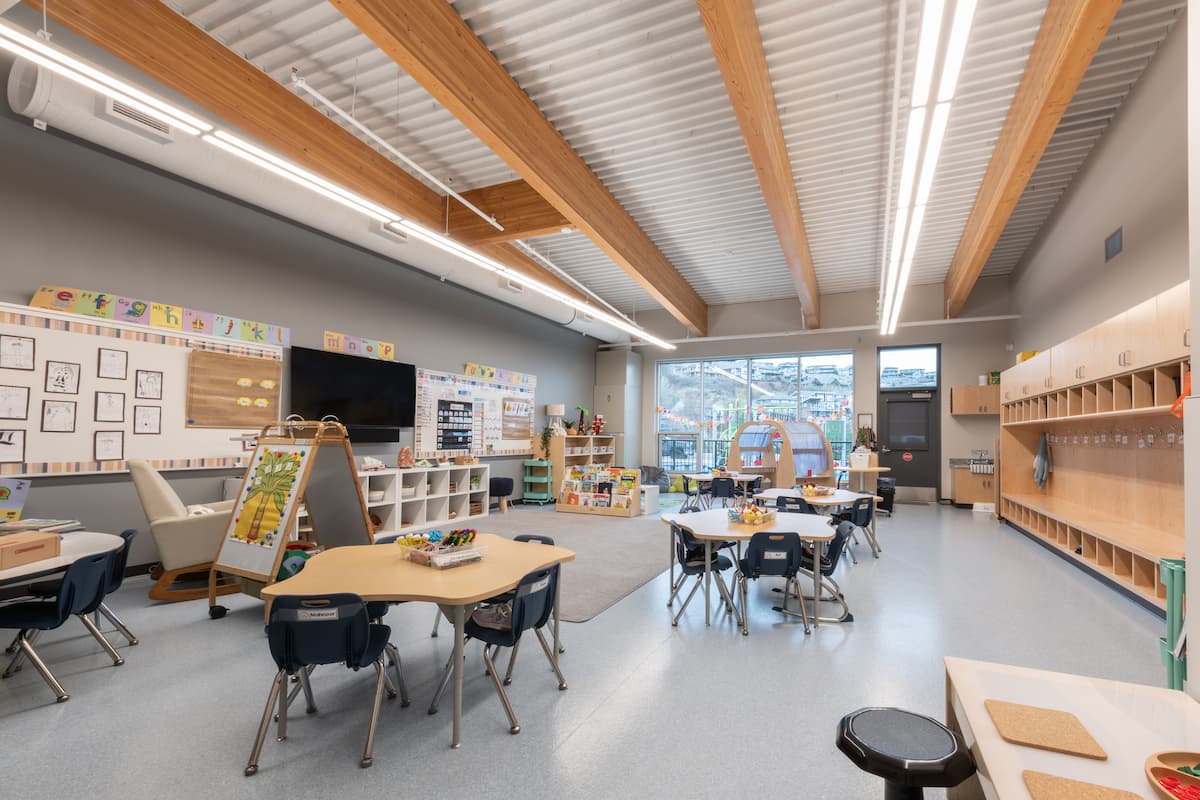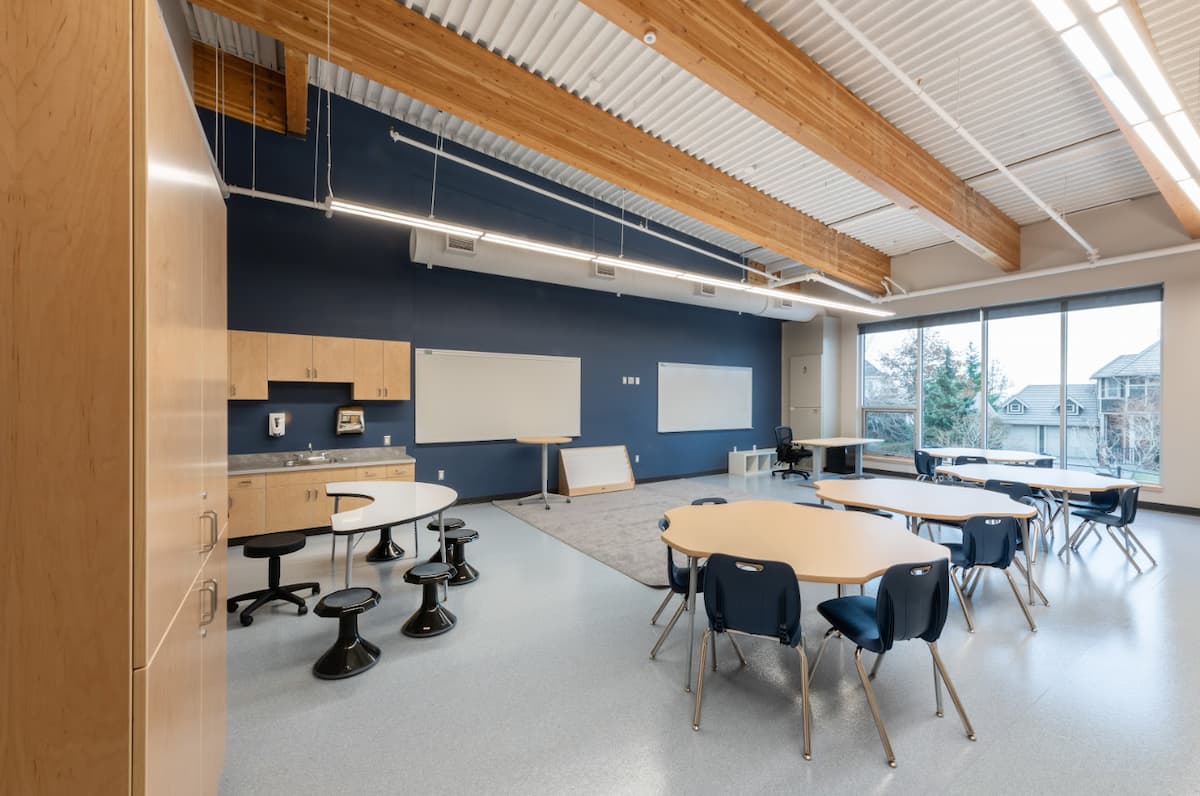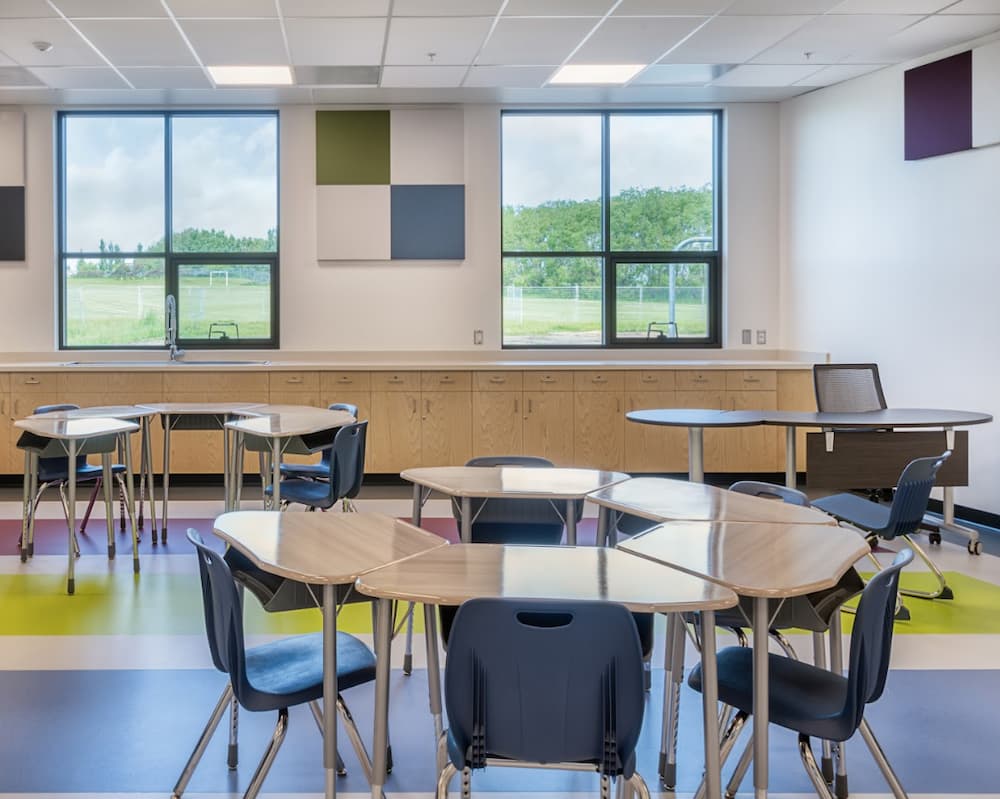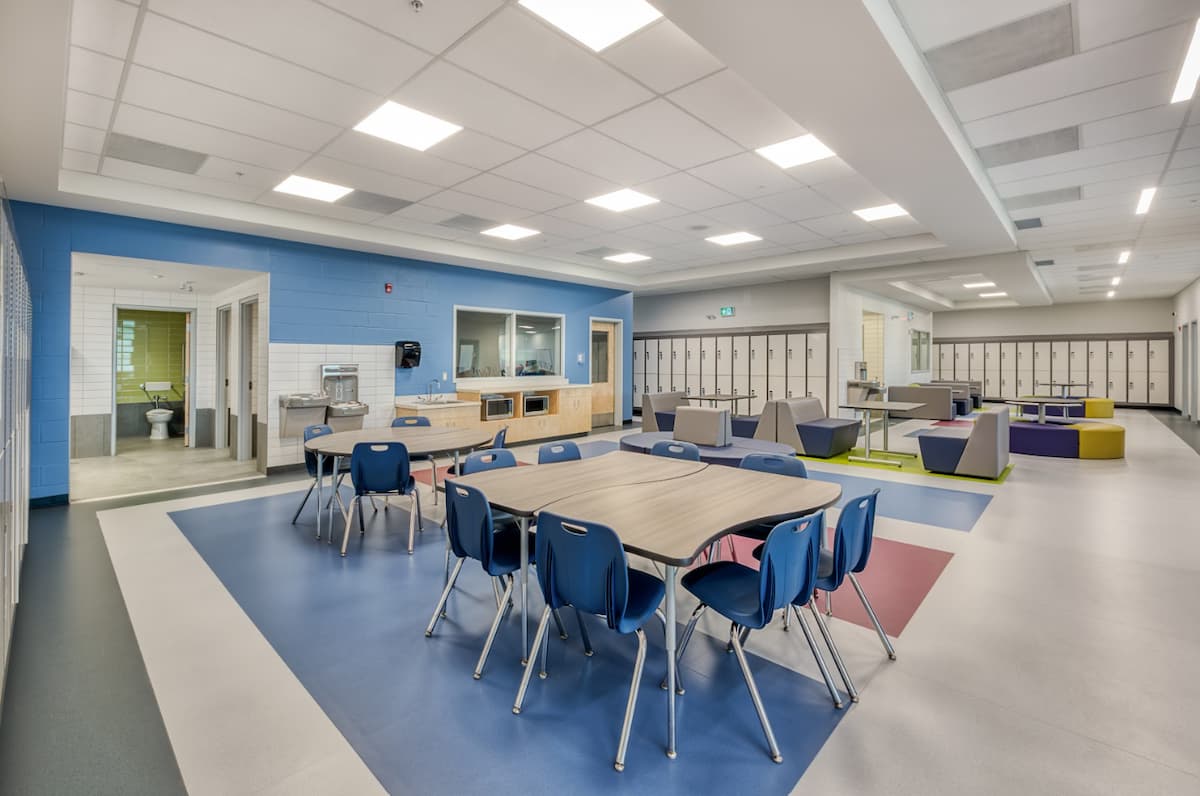4 Steps to Perfecting Classroom Seating Arrangements for Effective Learning
October 30, 2023

Theater-esque seating locks students into static seating arrangements and is, unfortunately, still the norm in most schools. These arrangements lack flexibility and limit how effective educators can be. Schools are beginning to see the negative impact this has on learning outcomes and they’re looking for solutions.
New classroom seating design strategies leverage the educational environment to better connect students to their teachers, each other, and the learning at hand. Classroom seating plans that consider the bigger picture of education focus on student’s minds and bodies to engage and impact the whole student. By changing the furniture in a space we create a plethora of educational opportunities.
Step 1: Understand Different Classroom Seating Arrangements
Traditional Rows and Columns
Dividing students into traditional rows and columns encourages only a one-way interaction between the students and their teacher.
Pros:
- Students are hyper-focused on the teacher
- Teachers can walk between students to supervise work
Cons:
- Collaboration between students is especially challenging
- Students behind the first row and beyond are more distracted
- Students in the back of the class have obstructed visual access to the teacher
Breakout Clusters or Groups
Moving desks into group classroom seating arrangements, typically clusters of desks or large tables with multiple seats for 5-8 students, increases student interaction.
Pros:
- Students are more collaborative with their peers, increasing engagement
- Teachers can foster healthy student interactions with strategic grouping
Cons:
- Some students may end up with their backs to the teacher, limiting access
- Students facing each other rather than the teacher can increase distractions

U-Shape or Circle Formations
U-shape and circle or semicircle classroom seating arrangements allow teachers to place all students within the teacher’s line of vision and all students within one another’s line of vision.
Pros:
- The teacher can directly view every student and easily move around the middle of the U or circle shape with all eyes on them
- Group discussions are easy to have, highly effective, and engaging in this classroom seating arrangement
Cons:
- They need a large classroom space to work
- These strategies can increase learning anxieties for students who aren’t comfortable in the front row
- Given the sprawling nature of this classroom seating plan, there is a lack of space for students to move around resulting in difficulties getting to their seats efficiently and making it hard for students not sitting directly next to each other to connect

Hybrid Strategies
Adopting a hybrid classroom seating arrangement allows educators and students to consider how their environment can best support the learning at hand, as well as the preferences of the teacher and students. Seating can differ in height, organization, and grouping. It may also incorporate movement-friendly seating for students.
Pros:
- Creates equal learning opportunities and accessibility
- Maximizes teacher visibility and minimizes distractions
- The classroom can be divided into ‘zones’ where different seating and desks are available to suit student preferences and learning styles
- Unique floor seating near the teacher, standing room in the back of the classroom with high tables, and a variety of seating options in between can be employed
- Educators can adapt their classrooms to integrate audio, video, written, visual, and hands-on (sometimes called kinesthetic) teaching
Cons:
- Hybrid classroom seating plans take more time and intentionality to develop

Step 2: Explore the Factors That Influence an Effective Classroom Seating Plan
When it comes to creating hybrid seating arrangements and highly customized seating plans, four main factors influence what will be truly effective:
- Class size and space size: Smaller classes and larger spaces afford the most flexibility in the design and strategy process. But with the right highly adaptable furniture, even larger class sizes can be accommodated comfortably and creatively in various classrooms.
- Learning objectives and teaching style: Educators may have a preferred teaching style that will inform the best seating for their students to engage, discuss, and collaborate. A teacher who has an authoritative style might choose a seating plan that is more forward-facing. In contrast, a teacher who has a student-led style may be more comfortable being surrounded by their students with a high degree of flexibility and student autonomy in the space.
- Students’ ages, personalities, and learning preferences: The furniture and spatial design choices you make will also be impacted by the developmental stage your students are in physically and socially.
- The role of technology and interactive learning tools: Students need to have easy access and view of technology in the classroom. Classroom seating plans also need to be built around keeping cords out of the way for safety purposes.
Step 3: Take a Note From Real-World Case Studies of Successful Classroom Seating Arrangements
Imagine High School
A completely re-imagined secondary school, Imagine High School, in Chilliwack, British Columbia, brought their A-game and open minds to every classroom and common space in their school. Over one year, CDI supported Imagine High School in developing an intensive strategy to honor Imagine’s community-based approach with learning ‘studios’, common ‘nesting’ spaces, and highly and easily customizable furniture for students.
St. Thomas Aquinas
Learning spaces that would grow with students was the driving priority for St. Thomas Aquinas Catholic Elementary and Junior School (slated to be built in South Edmonton, Alberta). Even if two teachers used the same room at St. Thomas Aquinas, they could create two unique classroom seating arrangements and learning experiences. Elements incorporated into this school included science rooms configured with stadium seating for better views and flip-top tables that can be pushed aside to make more room.
Step 4: Answer These 20 Questions to Design an Effective Classroom Seating Arrangement
#1 Assess the unique needs of your students and space
- How many students will use this classroom?
- What specific learning needs do your students have?
- How are electricity and technology used in this classroom?
#2 Consider inclusivity and accessibility
- What are the predominant learning styles of your students?
- How are you supporting neurodivergent students in your classroom?
- How are you accommodating physical disabilities in your classroom?
#3 Experiment with your seating arrangements
- Do you have any current classroom furniture that you can create a ‘mock’ arrangement with?
- Can you invite students to participate in experimenting with the classroom space?
- What gets your students excited about their classroom and engaged in learning?
#4 Utilize feedback from students and educators
- What do your educators need to foster strong student engagement in their space? What concerns do they have about flexible or hybrid seating?
- What type of gathering spaces are your students naturally attracted to when not at school?
- How do your students want to be able to move about and adapt the furniture in their classrooms?
Perfecting your classroom seating arrangements may take innovative thinking and openness to experimentation. Ultimately, you’ll have superior spaces for optimal learning that you can continue to evolve intentionally — ongoing assessment and adaptation are essential.
CDI has been on the cutting edge of emerging space trends that optimize classroom seating arrangements for effective learning and engagement. The symbiotic relationship between the furniture in a space and how students feel and focus within the space is undeniable. Every school that taps into the power of this relationship gives their students an instant advantage in their educational outcomes.
Ready to take a fresh and collaborative approach to your classroom? Get started here → Meet with a CDI design consultant today.

